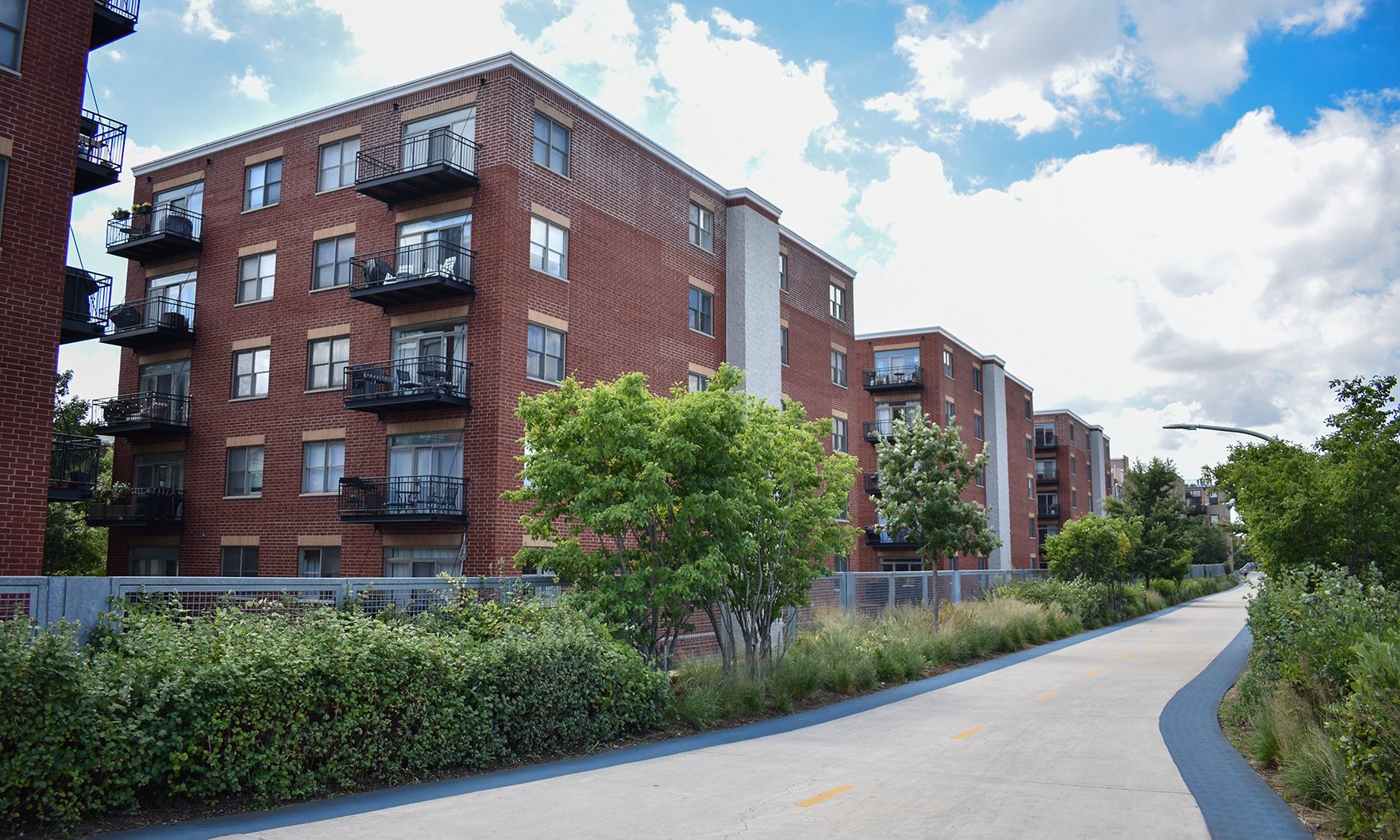A proposal to curb development along the stretch of the Bloomington Trail that’s known as The 606 was implemented at today’s Chicago City Council meeting. Though initially proposed as a 14 month moratorium, the most recent legislation will prevent property owners from obtaining demolition permits in areas near The 606 for six months, starting Feb. 1.
Mayor Lori Lightfoot and others initially challenged the legality of the original proposal, which would have not only lasted longer but also encompassed more real estate. The ensuing, pared-down version passed through the full city council without debate, according to Block Club Chicago.
Data shows displacement risk is high
Today’s vote came on the heels of an updated study by the Institute for Housing Studies (IHS) in the Real Estate Center at DePaul University that found displacement to be a growing problem, particularly on the west end of The 606.
In a deeper dive from their Mapping Displacement Pressure in Chicago project, researchers at DePaul’s IHS found a 344 percent increase in prices for one- to four-unit buildings in the western half of The 606 since 2012. This increase is well below the average property price appreciation in the city. Back in 2012, residential properties in this area were selling at 30 percent less than the city average. However, as of 2018, the same buildings have been selling at double the average in Chicago.
Researchers noted that this stark reality is really only true in what they called the “vulnerable portions of the western half of The 606,” where prices are not as high as they are further east and residents could more easily be displaced. Eastern properties were already expensive, so the increases didn’t hurt residents there as much.
In regard to the ordinance’s goal of saving small, multifamily properties, IHS noted that “rising prices have hit two- to four-unit buildings particularly hard.” The report showed that the median sales price for such buildings in 2012 was $97,000 and increased to $462,000 in 2018.
“As this relatively lower-cost stock disappears, opportunities for robust interventions to preserve affordability near The 606 are also fading,” the report concluded. Still, researchers noted that strategies to preserve these housing types could pay off in Hermosa, Humboldt Park and western Logan Square, where small multi-unit properties are still abundant.
Aldermen, city looking at a multitude of responses to gentrification
Lightfoot has made it clear she intends to change the relationship the city has with big development projects, and developers have expressed their displeasure with the situation. But on this particular project, much of the pushback has come from city hall.
The city council’s move to halt teardowns near The 606 was championed by legislation sponsors Ald. Roberto Maldonado (Ward 26) and Ald. Carlos Ramirez-Rosa (Ward 35). Both have characterized the initiative as being more of a stopgap measure, banning demolitions long enough to give local leaders enough time to create more long-term solutions.
Maldonado opposed the development of The 606 from the beginning. “High-end developers needed a premium urban park in order to sell mini-mansions that were miles away from Lake Michigan [that] only the upper 5 percent [of Chicagoans] could purchase. That’s why the real estate industry rallied behind the 606 Bloomingdale Trail,” reads a statement on the alderman’s website. “That’s why I did not support the 606 Bloomingdale Trail.”
Back in 2017, Crain’s Chicago reported on a plan from the two aldermen (along with then-1st Ward Ald. Joe Moreno) to charge high fees on property owners seeking demolition permits near The 606, though the proposal didn’t go anywhere.
But Maldonado is not out of ideas when it comes to slowing the displacement of residents near the 606. On his website, Maldonado suggested “fixing the problems the 606 created with forgivable loans.” He proposed the city offer owners of single-family homes up to a four-unit properties up to $25,000 in such financing to be put toward property repairs and upgrades.
